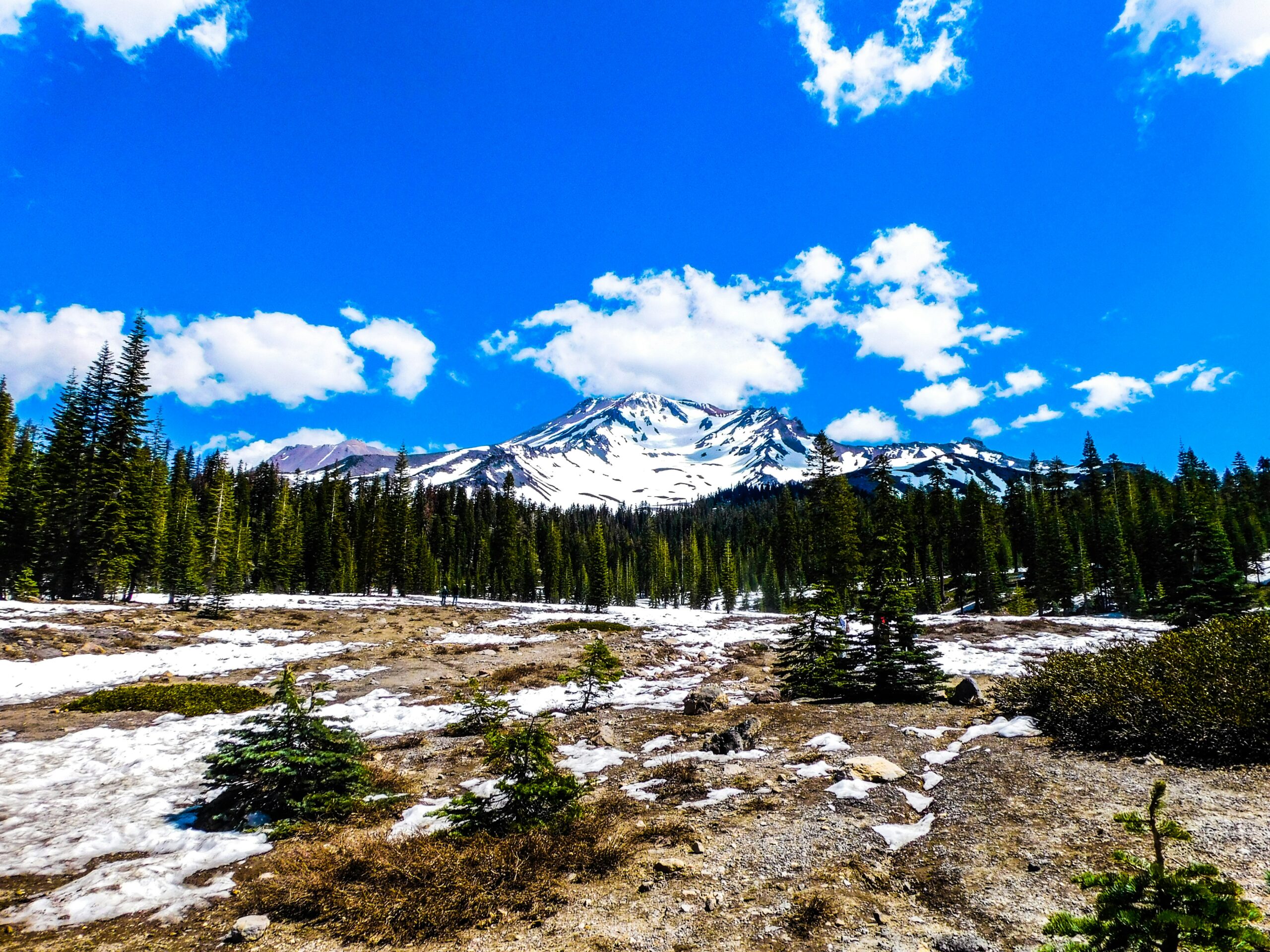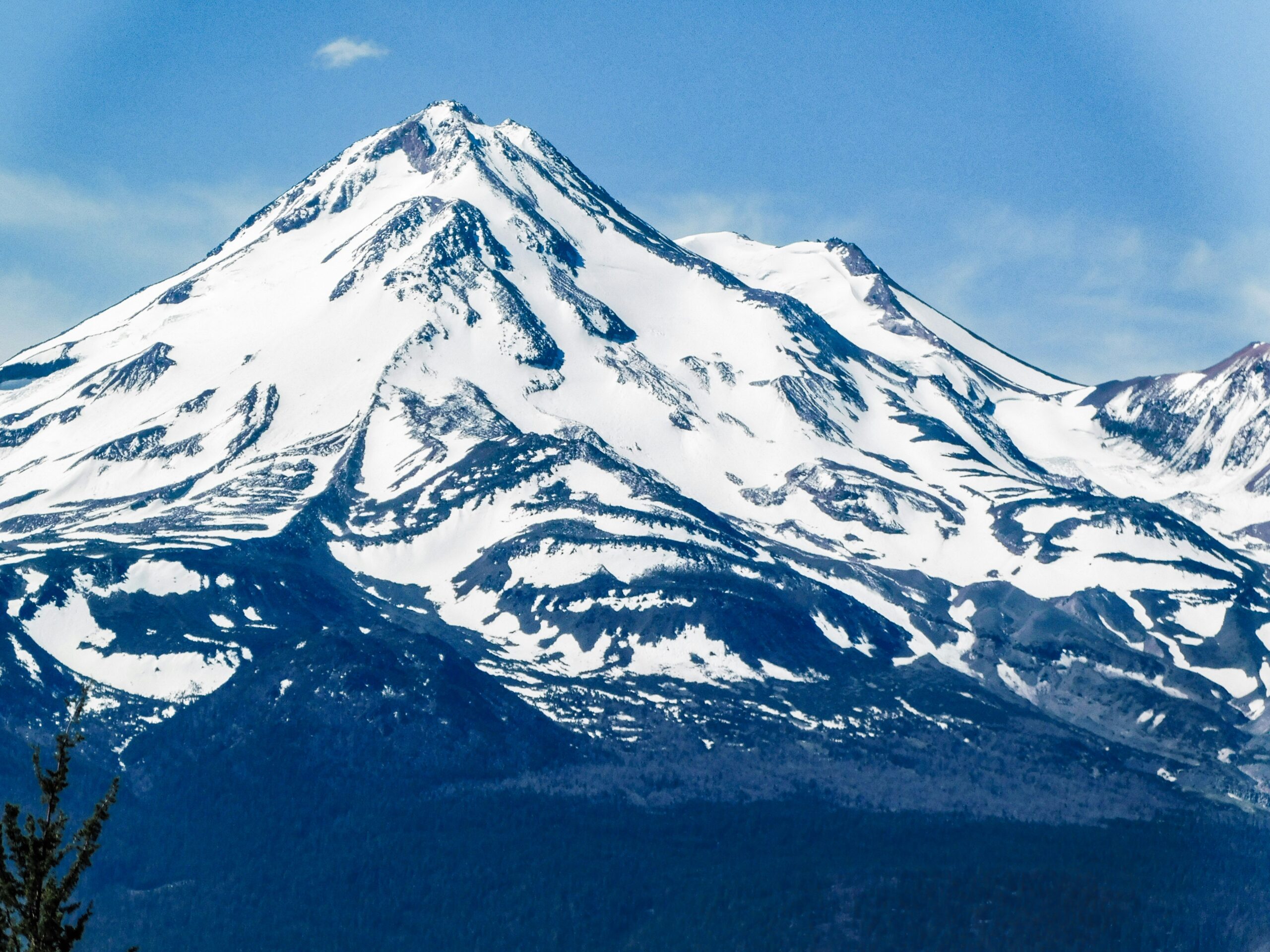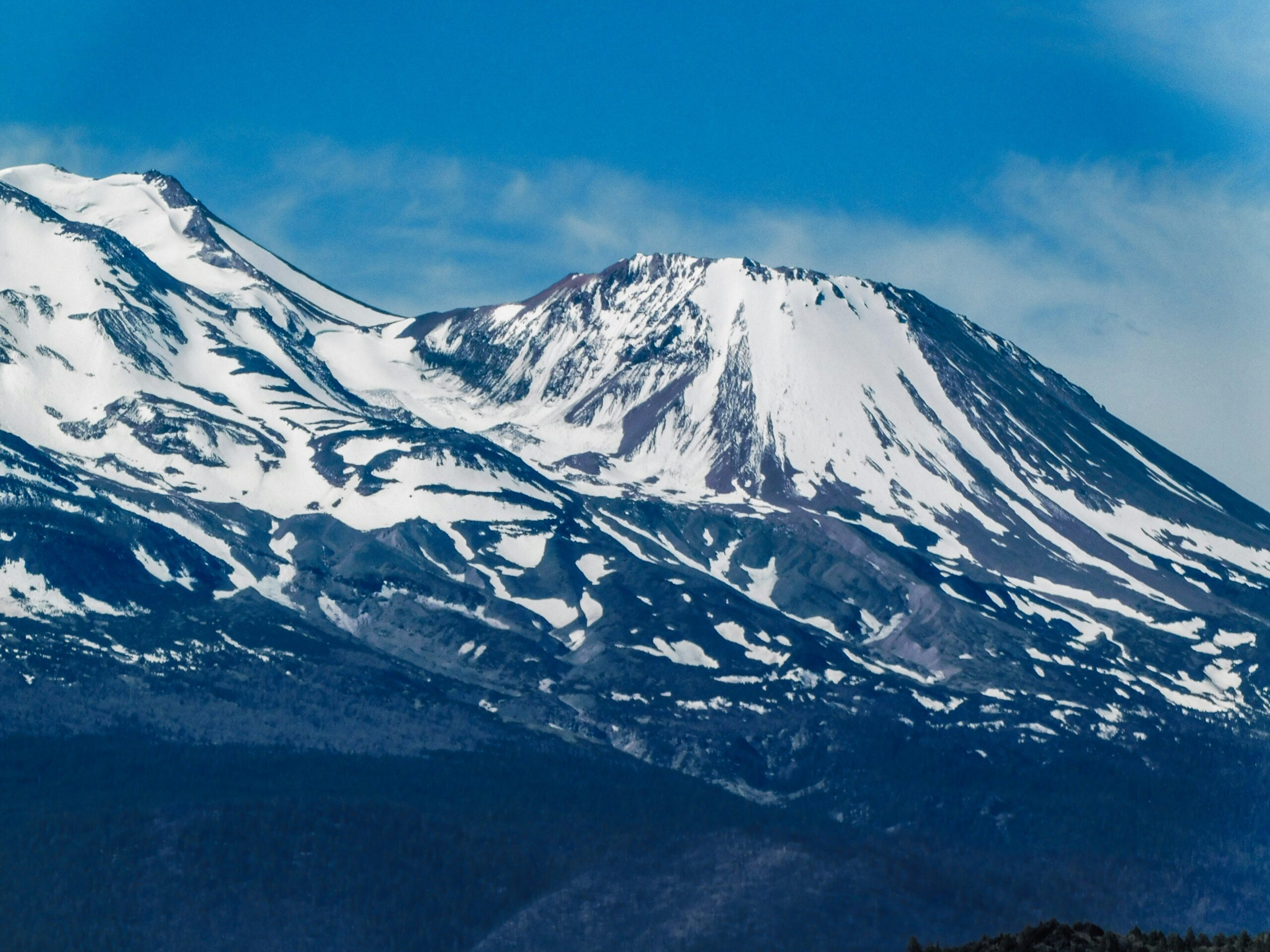Mount Shasta, with its majestic presence and snow-capped peak, has long fascinated adventurers and outdoor enthusiasts alike. This towering beauty, located in Northern California, beckons climbers from around the world to test their skills and conquer its challenging slopes. However, amidst its allure lies a question that echoes in the minds of many: Has anyone ever lost their lives while attempting to conquer Mount Shasta's formidable heights? In this article, we will explore the history and tales surrounding Mount Shasta, shedding light on the truth behind this intriguing inquiry.

Overview of Mount Shasta
A brief on Mount Shasta's geographical characteristics
Mount Shasta is a majestic stratovolcano located in Northern California. Standing at a towering height of 14,179 feet, Mount Shasta is a dominant presence in the Cascade Range. With its snow-capped peak and dramatic slopes, it serves as a stunning natural attraction for both outdoor enthusiasts and adventure seekers alike. Situated in the Shasta-Trinity National Forest, the mountain provides breathtaking views and a challenging terrain for climbers.
Popular climbing routes on Mount Shasta
Mount Shasta offers several climbing routes, each with its own unique challenges and appeal. One of the most popular and frequently chosen routes is the Avalanche Gulch, which starts from Bunny Flat and involves ascending through Red Banks and Misery Hill. Another well-known option is the Casaval Ridge route, requiring technical skills and traversing exposed ridges. The Clear Creek route is another popular choice, offering a more secluded and rugged experience. These routes, along with others like the Whitney Glacier and Hotlum-Bolam Ridge, provide climbers with varying levels of difficulty and thrilling experiences.
Why Mount Shasta is an appealing climb to mountain climbers
Mount Shasta boasts an allure that draws countless mountain climbers from around the world. Its challenging slopes, diverse climbing routes, and stunning natural beauty contribute to its appeal. Additionally, the elevation and terrain of Mount Shasta provide climbers an opportunity to test their physical and mental limits. Moreover, the solitude and serene environment of the mountain offer a unique escape from the chaotic modern world. For many climbers, the desire to conquer Mount Shasta becomes a lifelong goal, driven by the aspiration to stand at its summit and experience the exhilaration that comes with such a remarkable achievement.
Risks and Hazards in Climbing Mount Shasta
Climate conditions in Mount Shasta
Climbing Mount Shasta presents a range of climate conditions that pose challenges to mountaineers. Due to its elevation, the summit experiences significantly colder temperatures, strong winds, and low oxygen levels. The weather on Mount Shasta can change rapidly, with sudden storms and whiteout conditions, making navigation and shelter a necessity for climbers. It is crucial for climbers to be prepared for these extreme weather conditions and exercise caution during their ascent.
Physical hindrances in Mount Shasta
Apart from the harsh climate, Mount Shasta presents physical hindrances that climbers must overcome. The mountain's terrain varies from icy slopes to loose scree, demanding careful footwork and technical skills. Steep sections, rocky outcrops, and crevasses add elements of danger and require proper equipment and training. The physical demands of climbing Mount Shasta should not be underestimated, and climbers must be physically fit and mentally prepared for the challenges they will encounter.
Underlying dangers in climbing Mount Shasta
While Mount Shasta is an enticing climb, it is not without its risks. Avalanches, rockfalls, and icefalls are potential hazards that climbers must constantly be aware of and take precautions against. Altitude sickness, frostbite, and hypothermia are also serious concerns, requiring climbers to acclimatize properly and dress appropriately. Moreover, the isolation and remote nature of Mount Shasta mean that rescue operations may be delayed, intensifying the urgency of self-reliance and proper decision-making. It is essential for climbers to assess and manage these risks to ensure a safe and successful climb.
Mountain Climbing Safety Guidelines
General safety guidelines for mountain climbers
Regardless of their climbing destination, all mountaineers must adhere to general safety guidelines to minimize risks and maximize their safety. These guidelines include thorough trip planning, physical conditioning, and the acquisition of proper gear and equipment. Climbers should also be knowledgeable about the area, seek weather updates, and inform someone about their itinerary. It is crucial to climb with a partner or be part of a group, as well as to maintain open communication and establish emergency protocols. Additionally, climbers must possess and utilize the necessary technical skills and know appropriate techniques for self-arrest, rope management, and glacier travel.
Particular safety guidelines for climbing Mount Shasta
Climbing Mount Shasta has its own specific safety considerations due to its unique terrain and climate. It is recommended for climbers to engage in pre-climb conditioning, focusing on cardiovascular fitness and strength training. Acclimatization and hydration are also vital, especially for climbers coming from lower elevations. It is essential to carry the appropriate gear, including crampons, ice axes, helmets, and layers of warm clothing. Familiarity with route navigation through maps, compasses, or GPS devices is crucial, as is knowledge of avalanche assessment and avoidance. Mountaineers must also consult rangers and experienced climbers for up-to-date information on trail conditions and hazards.
Reported Mount Shasta Accidents
Data on documented mountaineering accidents on Mount Shasta
Over the years, several mountaineering accidents have occurred on Mount Shasta, with climbers facing a range of challenges and encountering dangers. These incidents have resulted in injuries, rescues, and, unfortunately, fatalities. The documented data on mountaineering accidents serves as a reminder of the risks associated with climbing the mountain and highlights the importance of preparedness, caution, and adherence to safety guidelines.
Severe accidents and near-death experiences on Mount Shasta
Mount Shasta has witnessed its share of severe accidents and near-death experiences. Stories of climbers falling into crevasses, getting caught in avalanches, or suffering from altitude sickness illustrate the critical nature of the risks present on the mountain. These incidents emphasize the need for climbers to understand and manage the dangers, make well-informed decisions, and be prepared for emergencies. The experiences of those who have faced life-threatening situations on Mount Shasta shed light on the precarious nature of the climb and the resilience required to overcome such adversity.

Fatalities on Mount Shasta
Incidents of death while climbing Mount Shasta
Tragically, there have been incidents of climbers losing their lives during attempts to conquer Mount Shasta. These fatalities serve as a stark reminder of the unforgiving and treacherous nature of the mountain. Reasons for these tragic incidents include avalanches, falls, hypothermia, and altitude-related illnesses. Each fatality reflects the inherent risks that climbers face and underscores the paramount importance of preparedness, experience, and caution.
Circumstances leading to fatalities on Mount Shasta
Fatality incidents on Mount Shasta often occur due to a combination of factors, including adverse weather conditions, inadequate preparation, or the inability to respond effectively to unexpected challenges. Poor decision-making, lack of experience, and disregard for safety guidelines have also contributed to the unfortunate loss of lives. These circumstances highlight the need for climbers to fully understand the risks and make informed choices throughout their climb.
Rescue and Recovery Operations on Mount Shasta
Overview of rescue operations on Mount Shasta
Rescue operations on Mount Shasta are complex endeavors due to the unpredictable nature of the mountain and the potential dangers involved. When accidents occur, specialized mountain rescue teams, including local authorities, rangers, and volunteer organizations, mobilize to save lives and provide assistance. These rescue operations encompass locating and reaching injured climbers, providing medical aid, and evacuating individuals to safety. The commitment and expertise of these dedicated rescue teams are instrumental in mitigating the consequences of accidents on Mount Shasta.
Challenges in rescue and recovery operations
Rescue and recovery operations on Mount Shasta are not without challenges. The remote and rugged terrain, inclement weather conditions, and limited accessibility pose significant obstacles to these operations. The need to deploy helicopters, coordinate ground teams, and overcome logistical difficulties compounds the complexity of rescue efforts. Furthermore, the physical and emotional toll on rescuers cannot be understated, as they put themselves at risk to save others. It is essential for climbers to understand the demanding nature of rescue operations and to take every precaution to minimize the risk of requiring rescue assistance.

Survivors' Stories
Testimonies of mountaineers who survived ordeals on Mount Shasta
The experiences of those who have survived harrowing ordeals on Mount Shasta provide invaluable insights into the challenges faced and the lessons learned. These survivors recount the moments of fear, resilience, and determination they encountered while climbing. Their stories emphasize the importance of preparation, adaptability, and calm decision-making in the face of unforeseen circumstances. Their narratives also serve to inspire and inform future climbers, encouraging them to approach the climb with a combination of respect, caution, and fortitude.
What survivors learned from their experiences
The survivors of Mount Shasta incidents have gained profound insights from their experiences. They stress the significance of thorough planning, researching and understanding the route, and heeding weather warnings. Survivors also emphasize the importance of teamwork, effective communication, and the ability to make difficult and timely decisions. Additionally, they highlight the role of mental preparation and perseverance in overcoming the physical and emotional challenges encountered on the mountain. Their lessons serve as a reminder that climbing Mount Shasta is not simply about conquering an objective but about embracing the journey and accepting the inherent risks that come with it.
Lessons and Insights on Mountain Safety
What these incidents teach about mountain safety
The incidents on Mount Shasta provide valuable lessons and insights into mountain safety. They underscore the need for comprehensive trip planning, including researching weather conditions and route information, as well as obtaining the necessary permits and permits. The importance of being physically fit, adequately equipped, and experienced in relevant technical skills is also evident. The incidents highlight the significance of good decision-making, recognizing and responding to potential hazards, and adjusting plans when needed. Overall, these incidents emphasize the need for a comprehensive understanding of the mountain's risks and a commitment to safety protocols.
Evolution of safety guidelines based on these events
The reported accidents and fatalities on Mount Shasta have led to an evolution of safety guidelines and practices. As incidents occur and lessons are learned, mountaineering organizations, guide services, and authorities update and refine safety recommendations. These guidelines underscore the importance of educating climbers, providing essential resources, and promoting responsible climbing practices. The evolution of safety guidelines is a continuous process aimed at reducing the occurrence of accidents and ensuring the safety of climbers on Mount Shasta and other mountains globally.
How Families Affected Cope With the Tragedy
Stories from families who have lost a member on Mount Shasta
The tragedies on Mount Shasta have had a profound and lasting impact on the families of those who have lost their lives. These families must navigate through the immense grief, sorrow, and loss that accompanies the sudden tragedy. Their stories reflect not only their loved ones' passion for mountaineering but also their resilience in the face of unimaginable loss. Sharing their experiences brings awareness to the lasting effects of these incidents and provides support to others who may find themselves in similar circumstances.
How these incidents have affected them
The families affected by these incidents face profound pain and a range of emotional challenges. The loss of a loved one on Mount Shasta affects every aspect of their lives, leaving an indelible void. Coping with grief, managing practicalities, and finding ways to honor the memory of their loved ones are ongoing journeys for these families. The incidents have also led many family members to advocate for improved safety measures, raise awareness about the dangers of mountaineering, and support initiatives that prioritize safety on Mount Shasta and other mountains.
How These Incidents Have Affected Mount Shasta Tourism
Impact on tourism and local economy
The incidents and accidents on Mount Shasta have had a noticeable impact on tourism and the local economy. While the allure of the mountain remains strong, the tragic incidents have caused some potential climbers to reconsider their plans. Concerns about safety, especially in the aftermath of highly publicized accidents, have led to a decrease in the number of climbers visiting Mount Shasta. This decrease has directly and indirectly affected local businesses, such as guiding services, equipment rental outlets, and hospitality establishments that depend on climbing tourism.
Changes in tourism policies and management
In response to the incidents, authorities and local organizations have implemented changes in tourism policies and management practices. These changes aim to enhance safety, reduce accidents, and restore confidence among climbers. Measures may include stricter permit requirements, improved monitoring of weather conditions, increased ranger presence on the mountain, and enhanced educational initiatives for climbers. The evolution of tourism policies and management practices is an ongoing and collaborative effort to strike a balance between promoting Mount Shasta as a climbing destination while prioritizing the safety and well-being of climbers.
In conclusion, Mount Shasta's allure as a climbing destination cannot be denied. Its towering peaks, challenging terrain, and breathtaking vistas attract mountain climbers from around the world. However, the risks and hazards inherent in climbing Mount Shasta should not be taken lightly. The unpredictable climate, physical obstacles, and ever-present dangers demand careful consideration and adherence to safety guidelines. The reported accidents, near-death experiences, and tragic fatalities serve as a somber reminder of the mountain's unforgiving nature. Through rescue operations, survivors' stories, and the insights gained from these incidents, climbers can learn valuable lessons about responsible mountaineering and prioritize safety above all else. The impact of these incidents on the families affected and the local tourism industry cannot be understated. Moving forward, it is essential for climbers, authorities, and the community to collaborate, constantly review safety measures, and ensure that Mount Shasta remains a challenging yet safe destination for all who dare to venture to its lofty summit.
